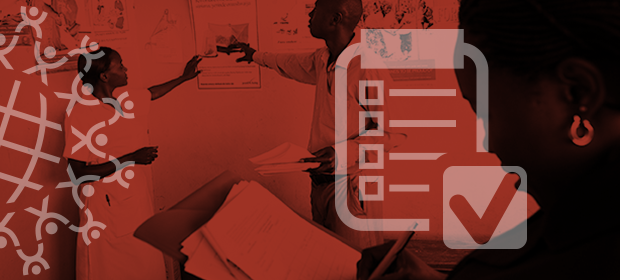Where We Work
See our interactive map


The quirks, preferences, and priorities that drive our decisions are tough to nail down.
Human beings do weird things sometimes.
Or maybe the things we do as individuals only seem weird to others because they don’t know our particular quirks, preferences, and priorities. Think about it: Why do you live where you live? How did you choose your job? What makes you go back to work day after day? The answers are different for us all.
Maybe we want to live close to our family. Maybe we love the city life, or our hometown is the only place we want to be. Or maybe we choose our jobs based on what pays the best, or what feels the most rewarding, or what works with raising our kids. People’s potential motivations are myriad. And health workers are no exception.
Here at the Fourth Global Forum on Human Resources for Health, the motivations of health workers have been a topic of special interest, from what it takes to entice them to live and work in rural Kenya to what subtle circumstances might cause a nurse in India to refer a client away to another facility—despite having the skills and resources to treat her in the moment.
The researchers, policy-makers, and global health experts assembled here in Dublin this week want to know the answers to these questions in part to help solve the vast maldistribution of health workers in countries around the world, where many—particularly specialists—tend to be clustered in cities, leaving rural or remote populations with less access to much-needed health care.
How do we measure how much likelier an employee might be to stay if given a raise, or an award, or a different boss?
But more than that, attendees at the forum this week want to know how to answer these questions. How exactly do we measure happiness at work? How do we measure how much likelier an employee might be to stay if given a raise, or an award, or a different boss?
The questions start the moment a student graduates from a health professional program and enters the workforce. The Royal College of Surgeons in Ireland, for instance, wants to understand when and why new doctors leave Ireland to practice in one of five main destination countries (Australia, Canada, New Zealand, the United States, or the United Kingdom). In fact, at the time of their graduation, one in five Irish trainees say they intend to practice medicine elsewhere. And once they leave, even if they’re thinking of it as temporary, the chances that they’ll return home become slimmer.
Ruairi Brugha, a professor at the Royal College of Surgeons in Ireland who led the Doctor Emigration Project during 2014–2016, noted yesterday that, “one shouldn’t be seeing these kinds of emigration rates in early-career doctors.”
According to the project’s survey results, only 53% of respondents who had already moved abroad to work in fellowship positions intended to eventually return to Ireland. (Surveys, Brugha points out, are not really ideal for long-term data collection. And this is the type of data countries ought to collect long-term, so we need other methods.)
In India, researchers are asking similar questions as they work to track medical graduates in the country. Why, for example, asked Aarushi Bhatnagar of Oxford Policy Management yesterday, do 75% of the doctors who graduate in Kerala, India, stay in Kerala—a state that produces a lot of health workers and already has high availability of health services—while only 53% of doctors who graduate in Bihar have stayed—despite the state’s low production and availability of health workers?
"When you have a problem, walk to the other side of it—and turn it into a solution.”
There are a lot of reasons health workers move. Better pay, yes, but there’s also availability of child care, good schools for their children, adequate housing, security.
Of course, there’s more to fixing the maldistribution of health workers than understanding motivations about where they want to live. Countries also need data on how many health workers they already have, what they’re qualified to do, and where they’re stationed.
Back before Kenya decentralized its health system management from one national hub to 47 individual county governments in 2013, two big rooms within the Ministry of Health were packed with the cluttered paperwork that held these data. Over 50,000 personnel files were stacked high, creating a chaos in which it was difficult to find anything you needed, and impossible to aggregate the data there into a bigger picture of Kenya’s health workforce.
“But when you have a problem,” said Robert Nguni of IntraHealth International yesterday at the forum, “walk to the other side of it—and turn it into a solution.”
So IntraHealth worked with the Kenyan government to organize and digitize their personnel files and enter them into IntraHealth’s open source human resources information system, iHRIS. Now all the counties and national stakeholders have access to information on more than 57,000 health workers, including where they’re stationed and what training they’ve had.
I can’t help but imagine what would happen if we could somehow combine the power of iHRIS data with what we know about the most effective incentive frameworks for health workers—like the one that helped transform Turkana County, Kenya, from a place where health workers were sent as punishment into a highly sought-after assignment location.
All those data could be a powerful combination—one that could put health care within reach for millions more people.
Be sure to follow along at #HRHforum2017 for more this week.
This post was originally published by Global Health Writes.
At the forum? Stop by booth #9 or come to one of our many sessions to find out more about what IntraHealth International is doing to help build the health workforce of the future.
IntraHealth’s work in Kenya is funded by the US Agency for International Development.
Get the latest updates from the blog and eNews




